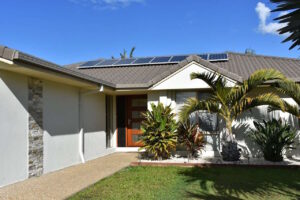 Contrary to what Australia’s environment minister proclaimed on ABC TV program The Insiders on Sunday, the National Energy Guarantee provides no confidence for investment.
Contrary to what Australia’s environment minister proclaimed on ABC TV program The Insiders on Sunday, the National Energy Guarantee provides no confidence for investment.
In fact, unless the government take swift action to address the total lack of detail it will have the opposite effect – and effectively freeze investment – just like it did when former prime minister Tony Abbott tried to scrap the renewable energy target.
The letter of advice (LOA) issued by the Energy Security Board is another plan to produce a plan. It is not a policy. The only thing that it does do is to make certain that there will be no detailed policy on which to make investment decisions for more than 12 months .
Think back. The government delayed policy awaiting the Finkel review. Then it delayed the decision on the clean energy target. Now it awaits another report that it could again reject, causing yet more delays. This plan to provide a plan is almost the worst outcome possible for investment certainty.
The NEG Plan is “ingenious” – as foreign minister Julie Bishop describes it – mostly for its ability go involve an emission trading scheme that will establish a carbon price, and without actually saying so.
Both an ETS and a carbon price have already rejected by the Liberal party room before, so the question remains: When the ESB return and make it clear in the final design that there is a form of carbon price, will it again be rejected?
The NEG plan calls for energy retailers to create an “energy porridge”, which requires them to have just the right amount of dispatchable power with the right level of emissions – a requirement to be tested by yet another government beast that is to be formed called the Reliability Panel. As if we didn’t have enough regulators already.
You might think that having an emissions system in the proposal will ensure that emissions will actually be reduced as retailers will be required to buy clean energy.
Think again. Rather than making the electricity market clean up its own act in Australia, polluting generators can reduce their carbon intensity of electricity by buying carbon credits from Chinese wind projects or pig farms.
That means that under this proposal there is no certainty that any renewables will need to be built to meet the emissions intensity terms of it, and therefore more investor uncertainty.
Governments can’t beat science and therefore any policy that is inconsistent with science will be discounted as credible by the investment community.
They will be uncertain when the government will have to change its mind, as they know governments can’t defeat science and they know that a Labor government would change the emissions intensity target anyway.
This all leads to uncertainty about the correct emissions trajectory to assume for investment purposes … adding yet more uncertainty .
The only other numerical detail in the document is related to the level of expected future investment in renewables. The NEG letter suggest that the amount of additional clean energy generations is about 6 per cent over the next 10 years, or 0.6 percent per annum. It may actually be less.
Worryingly, the government seems to have confirmed that they will not change the current RET, a lingering mechanism that allows any new projects to also generate certificates.
Finally, to put a nail in the coffin for investor confidence it appears that the government is planning to take the electricity market back to the 1980s.
Currently the wholesale power market lets anyone buy or sell power through the derivative and future market, creating a deep liquid market. That could all be undone by these proposed changes.







